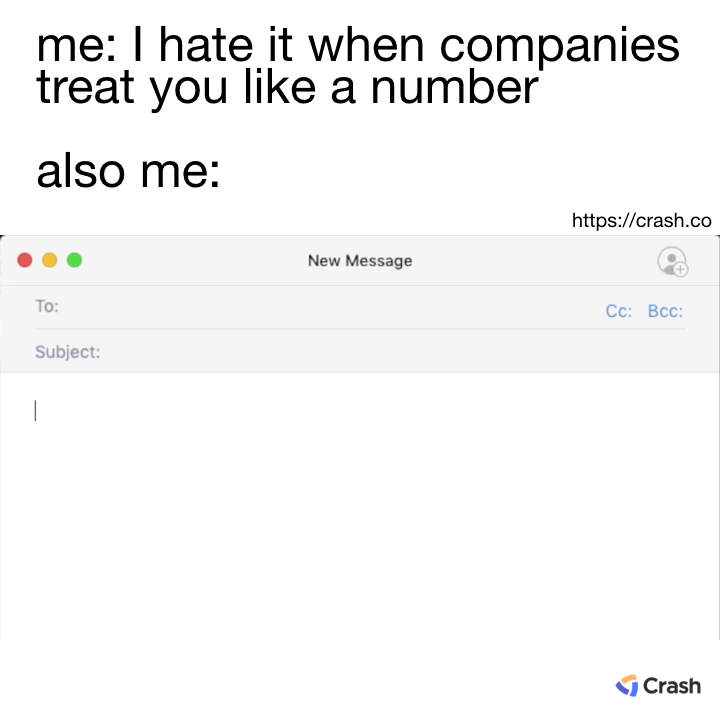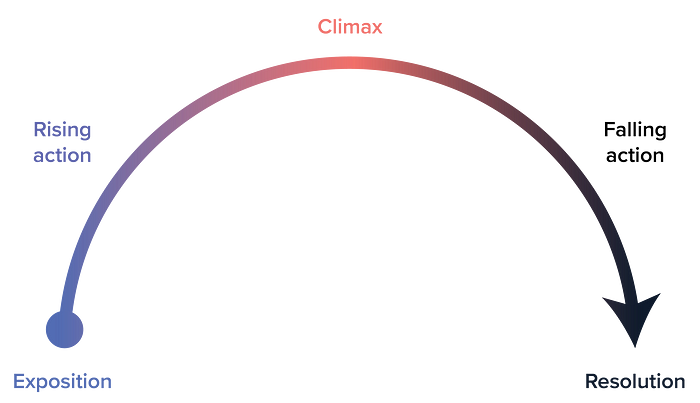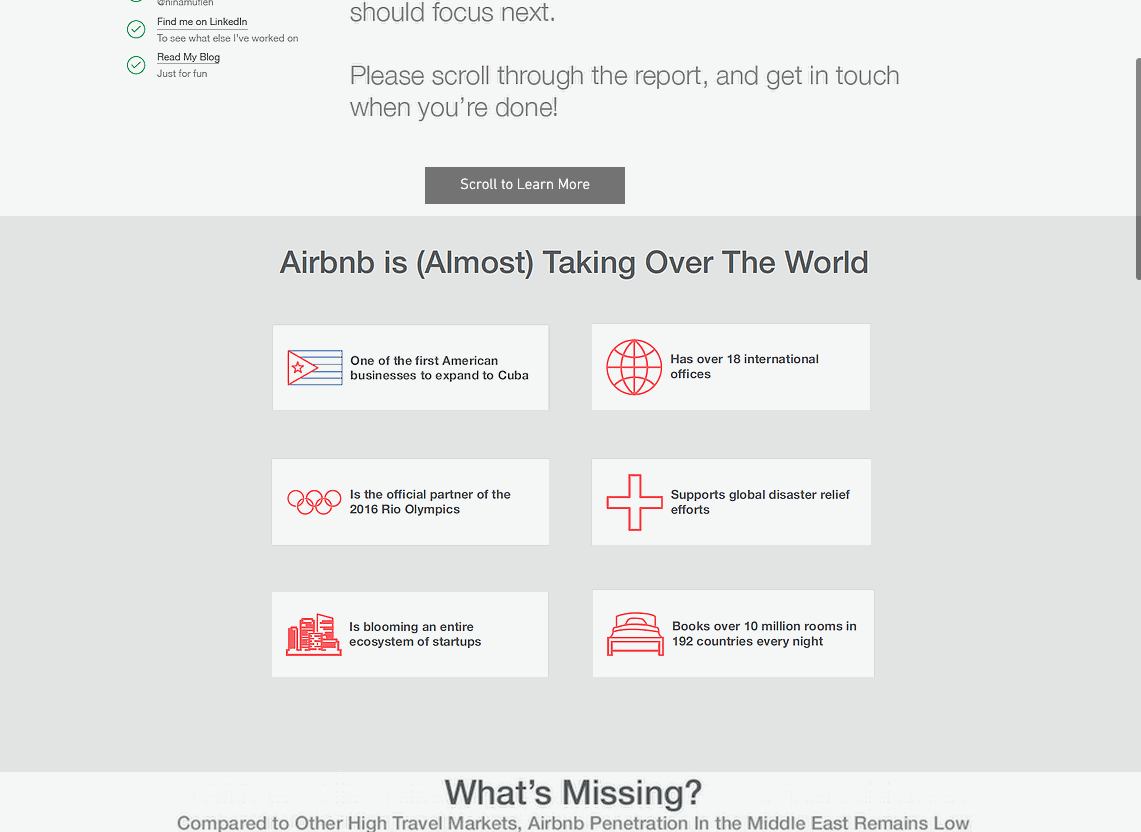 Can you imagine trying to get a date with a resume?
Can you imagine trying to get a date with a resume?
Trying to get a job with one is not much better.
Resumes are flat and lifeless. Bullets without narrative, words without proof. They are an appeal to the authority of third party credentials and lists of dates and titles. And there are millions of them, barely distinguishable, arriving in bland stacks on the desk of every hiring manager. You won’t stand out.
That’s why you should send a pitch.
What’s a pitch? Read on…
A Pitch has Personality
You’re a person. You want to work with people. Why let a bunch of dull text and bureaucratic apps make the match?
A pitch is a way to show your personality and drive. It connects, human to human, in a real way that can’t be easily faked or gamed. Forget trying to beat automatic resume keyword scanners and send them a real, dynamic snapshot of what you’re all about.
The best pitches include a short video, and ideally some projects or samples of your work.
(Hint: don’t wait for companies to ask for it!)
“I tried spray and pray for 2 months — 10 apps per week. Started sending pitches and out of 7 pitches, I got 4 interviews and one job offer. Huge difference.”
— Maxine Cox
A Pitch is about Piquing Curiosity
The goal of a sentence is to get you to read the next sentence.
The goal of a pitch is to get them to want to know more.
You don’t need to cram your life story into a pitch, or take them from zero to job offer all at once. You just need to get enough of their attention to make them curious.
A good pitch makes it impossible for them to say ‘no.’ In the words of Cal Newport, it makes you: “So good they can’t ignore you.”
What’s the smallest possible thing you can craft that makes them say, “I at least owe this person an interview”? That’s a pitch.
“This is BY FAR the best and coolest application I’ve ever seen in over 20 years of reviewing applications. You absolutely blew me away and made my morning.”
– Recruiter, in an email to a job-seeker who sent a pitch.
A Pitch is a Value Proposition
Only two things matter on the job market:
- Your ability to create value
- Your ability to prove it
A pitch is your best shot at proving the value you can create for a company. The most effective way to do it isn’t to make an ask, but to make an offer. Propose specific value you can create for them.
At the simplest level, you can paint a picture of what you’d do for them in your first 30 days on the job and offer to explain more.
If you really want to pack a punch, you can actually do the job before you get the job. Create something for them. If it’s a sales job, build a list of leads and send it. If it’s a design job, design something they could use in their marketing efforts. If it’s a customer success job, create a list of answers to FAQs from their customers. Get specific, and get creative.
 Once, I received a pitch from a guy who wanted a marketing role. (All the other applicants sent me a resume and didn’t propose anything they could do for me.) He created a video walking through extensive research on a target audience for us, did Google search rankings for our content to that audience, and put together a list of things we could do to improve our reach. He literally did what we were hiring him to do as a way of showing us he could do it. We hired him. Never even asked to see his resume, credentials, or work experience.
Once, I received a pitch from a guy who wanted a marketing role. (All the other applicants sent me a resume and didn’t propose anything they could do for me.) He created a video walking through extensive research on a target audience for us, did Google search rankings for our content to that audience, and put together a list of things we could do to improve our reach. He literally did what we were hiring him to do as a way of showing us he could do it. We hired him. Never even asked to see his resume, credentials, or work experience.
It’s darn-near impossible to say “no” to an interview when someone offers clear value they can create — and even more so when they prove it.
A Pitch is about Showing, Not Telling
If someone wants to convince you to download an app, buy a car, or order a dessert, what’s the best way for them to win you over?
Letting you experience it.
A free sample is better than a whole lot of talk.
For companies, making a hire is a big decision. Even doing an interview is a big commitment when you’re sorting through hundreds of applications. It takes a lot of brain power for hiring managers to try to map your words onto their role.
They have to translate a bunch of bullet points into a vision of what you might be able to do and how that might work at their company. By just sending an application, resume, or cover letter, you’re leaving the critical connection — the “fit” between you and the company — up to the hiring manager’s mood and imagination.
Why not show them what you can do for them?
Most candidates send something like this:
“Over 12 years of experience delivering high-value results in operations roles. Highly organized and efficient.”
Boring. Here’s what a hiring manager thinks:
“What does that mean for me or my company? What kind of results? How does this help me solve my specific problems? Those are just words. I want to see how you work!”
Compare that to a video or a project like this:
“Here’s a quick overview of the process I created at my previous company to track all customer complaints and route them to the right department. In this chart, I broke down the average response time, and you can see it improved from three to two days. I want to create organized systems like this for your company. Attached is one example I made for you.”
Now, as a hiring manager, I know exactly how you create value, and I don’t have to guess about whether you’re just blowing smoke. It’s right there for me to see. And seeing is believing.
A Pitch is Personalized, Not Generic
Hiring managers are human.
I know, it’s difficult to believe if you’ve been blasting resumes to hundreds of them and getting nothing but the occasional robotic reply. But, just imagine how they feel. They are passionate about their job and company, in need of another teammate with equal passion, and what do they get when they post job openings?
Countless emails beginning “Dear Sir or Madam,” generic cover letters addressed to the wrong company, resumes without explanation, and one-click applications from big jobs boards that just say, “Interested in all roles.”
 The old saying goes, “They won’t care how much you know unless they know how much you care.” If you treat them like just one more lifeless number in your spray-and-pray job hunt, they’ll probably do the same in return.
The old saying goes, “They won’t care how much you know unless they know how much you care.” If you treat them like just one more lifeless number in your spray-and-pray job hunt, they’ll probably do the same in return.
Instead, slow down.
Find the name of the person you’d be working for. Send them a personal pitch addressed only to them. Tell them you’ve read their recent blog post, or seen them on LinkedIn or Twitter, and that you’re really excited to show them your stuff and join their awesome company! Be sincere.
They want to hire a human being that they enjoy working with. Be that way in the application process! Make them feel like a person you care about.
“Normally I don’t jump for joy when I get a cover letter but this one was exciting, way more personal, dare I say fun?!”– Recruiter, in a LinkedIn post
A Pitch is about Them More Than You
Remember the dating analogy? It’s probably the simplest trick for figuring out how to pitch.
You wouldn’t walk up to someone you wanted a date with and say,
“Here are ten reasons I’m highly dateable!”
(At least I hope not.) You’re more likely to pique their interest if you tell them why you find them fascinating and enjoy their company.
If you want someone to give you attention, give them attention. If you want to be interesting, be interested.
Companies are drowning in people telling them all the things they can do. It can easily feel like all these applicants don’t really care what company hires them, so long as they get a paycheck in return for having a list of skills or accolades. It’s unbecoming.
Don’t open by talking about yourself. Talk about them!
“I am a conscientious person with a great work ethic” is same-same and easy to ignore.
“I have been following your company for the past two years and I am in love with your mission. You are the best in the business when it comes to creating great product experiences, and I want to be a part of your world class team.”
Now, that is very hard to say “no” to.
It’s flattering. It shows you want this job, not just any job. It reveals a level of drive, passion, and detail that companies value deeply.
Tell them why you love them, not just why they should love you.
A Pitch is a Story
Beginning, middle, end. We all know the basic elements of a story. But a good test for whether you have a story or a dead piece of paper is to swap the parts around and read it again. If it still makes sense, it’s not a story.
Resume sections and bullets are interchangeable. Pitches, like good movies, flow through what we call a narrative arc.
 They immediately give the viewer something they want, use that as a hook to share something you want to say, and bring it to a conclusion. There are lots of ways to craft a narrative, but the simplest and most effective structure for pitches looks like this:
They immediately give the viewer something they want, use that as a hook to share something you want to say, and bring it to a conclusion. There are lots of ways to craft a narrative, but the simplest and most effective structure for pitches looks like this:
- Why you love their company (genuine, not faked)
- What you bring to the table (demonstrated, not just said)
- Why their mission and your passion/skills will create a win-win
That third part is important, because…
A Pitch Connects the Dots
Them + You = Win. That’s the formula.
You need to describe each part of the equation.
Don’t just tell them you love them. Don’t just show your skills. Connect the two by explaining how who they are and who you are will create something special.
A powerful part of a pitch is sharing not just what you can do, by why. What’s your motivation? What drives you? And why are you pitching this specific job and company?
Connect your personal story arc to this opportunity. Compare:
No Story Arc
“I know several programming languages and studied statistical analysis. I have worked in a variety of roles in IT and data, and now I look forward to working for your company as a junior developer.”
Story Arc
“Since I was a kid I’ve been obsessed with solving problems. I stayed up all night learning to solve my Rubik’s cube. That’s what drove me to learn to code and work in various IT and data roles. Now, that same obsession with problem solving is what excites me so much about becoming a junior developer at your company.”
When you share your core values and the motivation behind your path and the skills you’ve learned, it creates a narrative and allows you to connect where you came from to the role you’re seeking. It feels like this company and role are a part of your destiny, and the logical progression of your journey.
A Pitch is As Small As Possible, but No Smaller
Seven seconds.
That’s how long your resume is reviewed by the average hiring manager.
How can you best use those seven seconds?
Remember, you’re not trying to win the job with a pitch — you’re just trying to get them interested enough to want to know more on a phone call. What’s the smallest thing you can create that will be too good to ignore? Send that.
Sometimes, it’s a video and a large set of pretty robust projects. Sometimes it’s just one simple item. It depends on the role, company, and your skills and personality.
You don’t want to have them feel burdened or bored. Make it easy for them. Don’t send a 70-page PDF that makes no sense until page 35. Hit them right up front with something interesting, and provide just enough proof to show you’re worth the time.
You can have a lot more projects and proof to back it up later in the process, but the initial pitch should be lean enough to not demand much of their time, but not so lean that it leaves them wondering if you’re worth an interview.
I like to break it into a “pyramid of attention,” which looks like this:
In the first 7 seconds…
 They need to see something that makes them want to spend 30 seconds:
They need to see something that makes them want to spend 30 seconds:
In the next 30 seconds…
 They need to see something that makes them want to spend a few minutes:
They need to see something that makes them want to spend a few minutes:
In the next few minutes…
 They need to see something that makes them want to interview you.
They need to see something that makes them want to interview you.
If after 10 minutes (max) of looking over what you sent they’re still not sure it’s worth reaching out, you probably didn’t get the pitch quite right, or it’s simply not a great match for what they feel they need at this time.
Of course, these are general rules and there are many exceptions. But the point remains: give them enough to want more.
A Pitch is a Sales Strategy
Effective sales people:
- Identify a prospect,
- Research them,
- Find their pain-points,
- Find their contact info,
- Personalize a reach-out that focuses on benefits, not features, and
- Make a clear offer or ask.
And that’s exactly how you should treat your job hunt.
A salesperson looking to close a $40,000 deal would NEVER blast this:
“Dear Sir or Madam,Please buy this product. One-page description attached.Thank you,”
So why would you do that when hoping to win a $40,000+/year job? You’re trying to close a big deal. Act like it!
Treat each pitch with care. Dive deep on the companies you really like. Go all in pitching them. Track your pitches and follow up if you haven’t heard back within a few days. Send thank you notes.
It doesn’t hurt to study effective salespeople and learn how they work. Your job hunt is a sales process.
A Pitch is Marketing for “You, Inc.”
One cool thing about a pitch is that it can be more than just something you send to one person. It can create a broader branding campaign for what we call “the startup of you.”
I’ve seen people share pitches on social media, or Tweet them at the company, and get shared and liked by dozens of people from other companies. I’ve seen people share a pitch they made for one company and end up getting interviews for other companies.
One famous example was Nina4Airbnb.com. Nina pitched Airbnb with specific value props and projects showing her value. It went viral, and she got interviews from tons of other companies.
Her pitch was more than just a one-to-one sales pitch: it served as a marketing campaign to the broader world. Hiring managers thought, “If she would do this for Airbnb just to get an interview, what could she do for my company?”
 A good marketing campaign conveys a company’s ‘why,’ ‘how,’ and, ‘what.’ As I mentioned earlier, your “why” is your purpose. Your “how” is the process or actions you take to make progress on your purpose. Your “what” is what you do, or the result of your why and how.
A good marketing campaign conveys a company’s ‘why,’ ‘how,’ and, ‘what.’ As I mentioned earlier, your “why” is your purpose. Your “how” is the process or actions you take to make progress on your purpose. Your “what” is what you do, or the result of your why and how.
When you pitch a company and show work that demonstrates your “why, how, and what” applied specifically to their company, it also shows the rest of the world how you tick and your value.
Pitches get shared around and help shape people’s perception of you. The way you apply to a job is a form of advertising. How do you want to market yourself?
A Pitch is Whatever it Takes to Win an Interview!
There’s no one single formula. Pitches are as unique as you.
It might be a hand delivered burrito with a note that says, “Check your email,” it might be a video of you flipping on a trampoline, it might even be an offer to do a free trial. It’s entirely up to you. Having a pitch mindset is the key.
Pitching is about taking the lead. It’s about grabbing the joystick and turning off autopilot.
The way you start your career sets the tone for your life. The way you present yourself as a candidate sets the tone for your new job.
If you lifelessly click “Apply” and attach the same resume 100 times hoping for the best, you’re setting a tone of powerlessness, boredom, disinterest, and simply “meeting spec.” If you want to live your life that way, have at it. But, if you want more, don’t try to get a job that way.
“You don’t have the experience and qualifications for this role, but your pitch and profile are so strong and show you’re a hustler, so we’re going to give you a shot anyway!”– Hiring manager, in an email to a DJH subscriber
Go forth and pitch!

